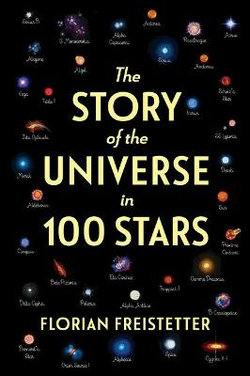With roughly 100 billion stars in the Milky Way alone, the cosmos is simply too vast for an unabridged tell-all. But here's the next best thing: 100 stars--bright and faint, near and far, famous and obscure, long dead and as-yet unborn, red, yellow, blue, and white (but, as you'll learn, never green)--handpicked by astronomer Florian Freistetter because they have the very best stories to tell:
- GRB 080319B, the farthest we've seen into space with the naked eye
- Gamma Draconis, the star that proved Earth rotates on its axis
- V1364 CYGNI, pivotal in the discovery of dark matter
- 72 Tauri, definitive evidence for Einstein's theory of relativity
- V1, which revealed horizons beyond the Milky Way
- Algol, called the Demon Star for its mysterious blinking--and many more!
Freistetter's short, easy-to-read profiles not only invite you to gaze into the past and future of the universe, they introduce a stellar cast of scientists who came before: from Annie Jump Cannon, who revolutionized how we classify the stars, to Dorrit Hoffleit, who first counted them. Enjoy your journey through the cosmos. . . .
This title is in stock with our overseas supplier and should be sent from our Sydney warehouse within 3 - 4 weeks of you placing an order.
Once received into our warehouse we will despatch it to you with a Shipping Notification which includes online tracking.
Please check the estimated delivery times below for your region, for after your order is despatched from our warehouse:
ACT Metro 2 working days
NSW Metro 2 working days
NSW Rural 2 - 3 working days
NSW Remote 2 - 5 working days
NT Metro 3 - 6 working days
NT Remote 4 - 10 working days
QLD Metro 2 - 4 working days
QLD Rural 2 - 5 working days
QLD Remote 2 - 7 working days
SA Metro 2 - 5 working days
SA Rural 3 - 6 working days
SA Remote 3 - 7 working days
TAS Metro 3 - 6 working days
TAS Rural 3 - 6 working days
VIC Metro 2 - 3 working days
VIC Rural 2 - 4 working days
VIC Remote 2 - 5 working days
WA Metro 3 - 6 working days
WA Rural 4 - 8 working days
WA Remote 4 - 12 working days



Share This Book: